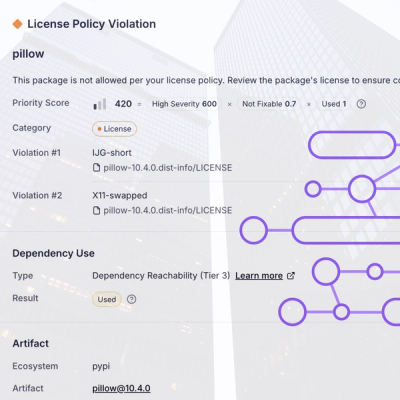
Research
/Security News
Critical Vulnerability in NestJS Devtools: Localhost RCE via Sandbox Escape
A flawed sandbox in @nestjs/devtools-integration lets attackers run code on your machine via CSRF, leading to full Remote Code Execution (RCE).
Documentation: https://py-cachify.readthedocs.io/latest/
Source Code: https://github.com/EzyGang/py-cachify
FastAPI Integration Guide: Repo
Py-Cachify is a robust library tailored for developers looking to enhance their Python applications with elegant caching and locking mechanisms. Whether you're building synchronous or asynchronous applications, Py-Cachify has you covered!
Flexible Caching: Effortlessly cache your function results, dramatically reducing execution time for expensive computations and I/O-bound tasks. Utilize customizable keys and time-to-live (TTL) parameters.
Distributed Locks: Ensure safe concurrent operation of functions with distributed locks. Prevent race conditions and manage shared resources effectively across both sync and async contexts.
Backend Agnostic: Easily integrate with different cache backends. Choose between in-memory, Redis, or any custom backend that adheres to the provided client interfaces.
Decorators for Ease: Use intuitive decorators like @cached() and @lock() to wrap your functions,
maintain clean code, and benefit from automatic cache management.
Type Safety & Documentation: Fully type-annotated for enhanced IDE support and readability, featuring comprehensive documentation and examples to guide you through various use cases.
Production Ready: With 100% test coverage and usage in multiple commercial projects, Py-Cachify is trusted for production environments, ensuring reliability and stability for your applications.
$ pip install py-cachify
---> 100%
Successfully installed py-cachify
You can read more in-depth tutorials here.
First, to start working with the library, you will have to initialize it by using the provided init_cachify function:
from py_cachify import init_cachify
init_cachify()
By default, it will use an in-memory cache.
If you want to use Redis:
from py_cachify import init_cachify
from redis.asyncio import from_url as async_from_url
from redis import from_url
init_cachify(sync_client=from_url(redis_url), async_client=async_from_url(async_redis_client))
Normally you wouldn't have to use both sync and async clients since an application usually works in a single mode i.e. sync/async.
Once initialized you can use everything that the library provides straight up without being worried about managing the cache yourself.
❗ If you forgot to call init_cachify the CachifyInitError will be raised during runtime.
Caching by using @cached decorator utilizing the flexibility of a dynamic key:
# Cache the result of the following function with dynamic key
@cached(key='sum_two-{a}-{b}')
async def sum_two(a: int, b: int) -> int:
# Let's put print here to see what was the function called with
print(f'Called with {a} {b}')
return a + b
# Reset the cache for the call with arguments a=1, b=2
await sub_two.reset(a=1, b=2)
Read more about @cached here.
Locking through context manager:
from py_cachify import lock
async_lock = lock('resource_key')
# Use it within an asynchronous context
async with async_lock:
# Your critical section here
print('Critical section code')
# Check if it's locked
await async_lock.is_alocked()
# Forcefully release
await async_lock.arelease()
# Use it within a synchronous context
with lock('resource_key'):
# Your critical section here
print('Critical section code')
Locking via decorator:
from py_cachify import lock
@lock(key='critical_function_lock-{arg}', nowait=False, timeout=10)
async def critical_function(arg: int) -> None:
# critical code
# Check if it's locked for arg=5
await critical_function.is_locked(arg=5)
# Forcefully release for arg=5
await critical_function.release(arg=5)
Read more about lock here.
For a more detailed tutorial visit Tutorial or full API reference.
If you'd like to contribute, please first discuss the changes using Issues, and then don't hesitate to shoot a PR which will be reviewed shortly.
This project is licensed under the MIT License - see the LICENSE file for details.
FAQs
Distributed locks, caching, and locking decorators at hand
We found that py-cachify demonstrated a healthy version release cadence and project activity because the last version was released less than a year ago. It has 1 open source maintainer collaborating on the project.
Did you know?

Socket for GitHub automatically highlights issues in each pull request and monitors the health of all your open source dependencies. Discover the contents of your packages and block harmful activity before you install or update your dependencies.

Research
/Security News
A flawed sandbox in @nestjs/devtools-integration lets attackers run code on your machine via CSRF, leading to full Remote Code Execution (RCE).

Product
Customize license detection with Socket’s new license overlays: gain control, reduce noise, and handle edge cases with precision.

Product
Socket now supports Rust and Cargo, offering package search for all users and experimental SBOM generation for enterprise projects.